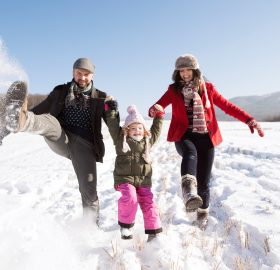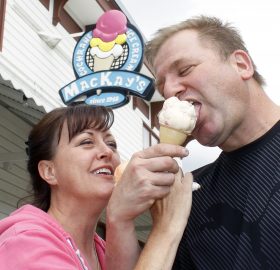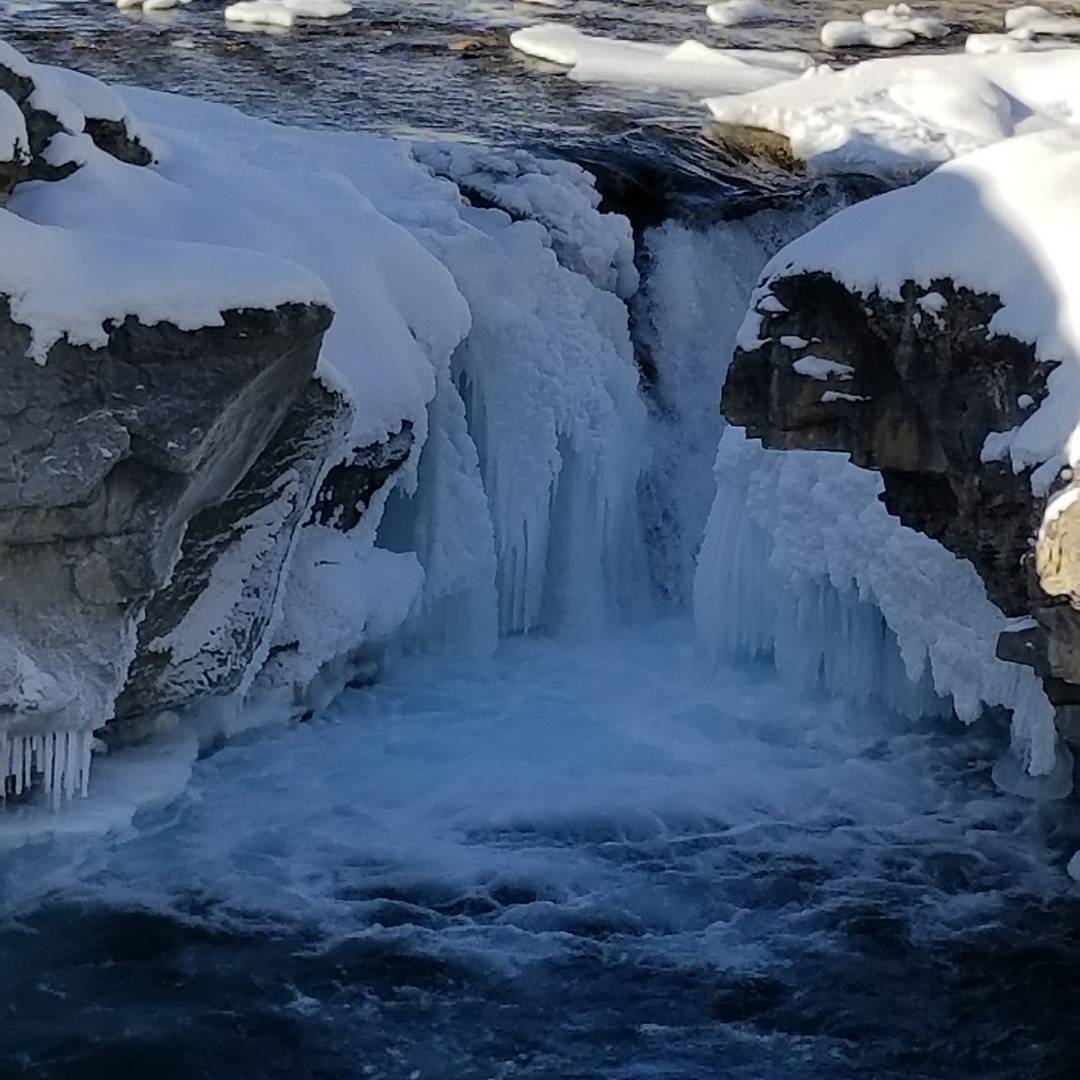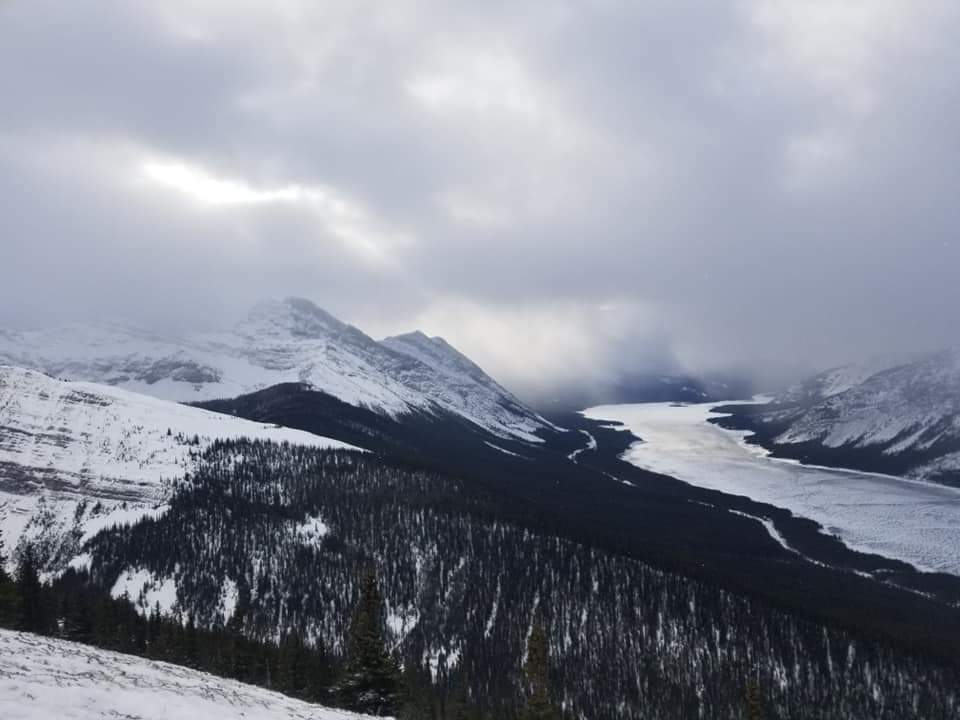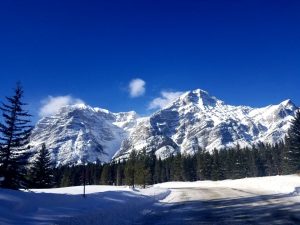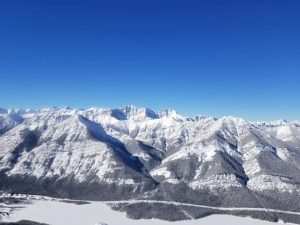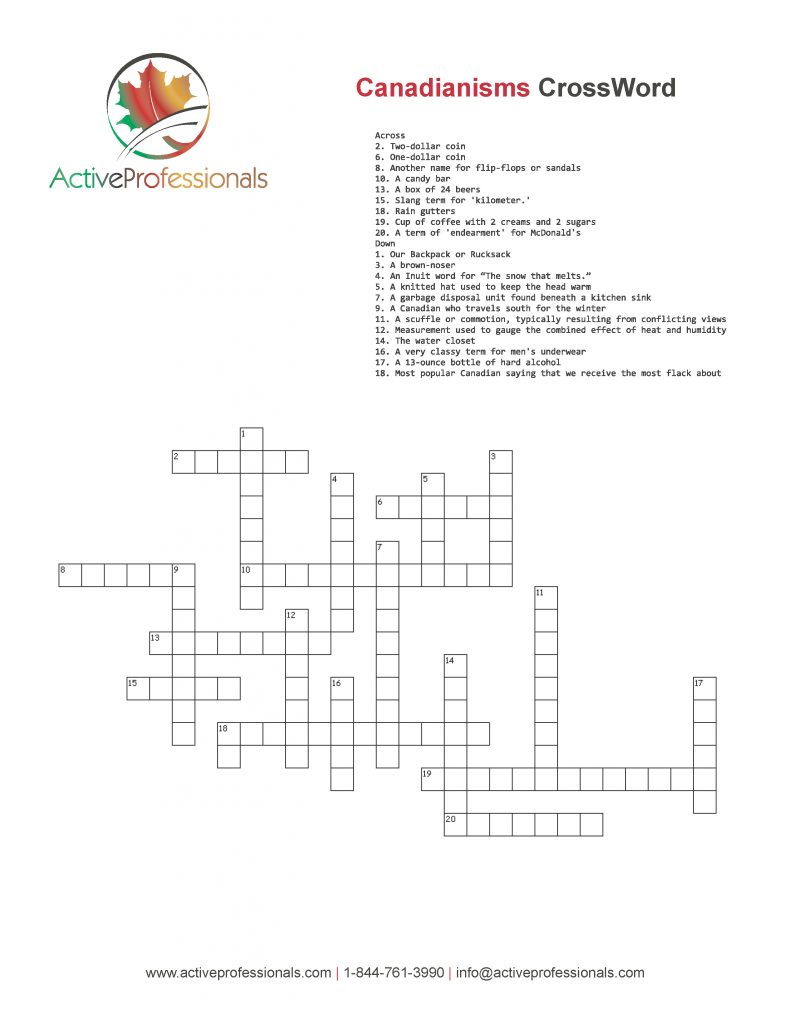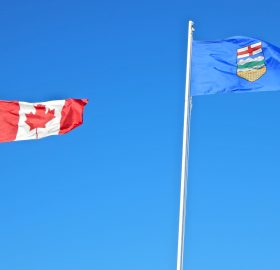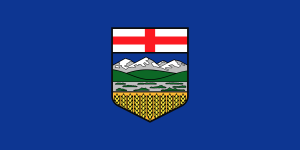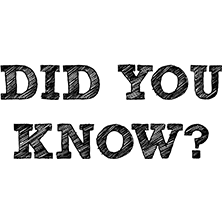What is Credit and Why Do I Need It?
Credit is a delayed payment plan between a borrower and a lender that enables access to funds for repayment at a later date. Common types of credit include installment loans for large purchases, as well as revolving credit arrangements including credit cards and lines of credit.
Access to credit reduces the burden of paying cash for high-cost items, such as a house or car, allowing you to spread the expense out over time. Credit is what makes purchasing major items like homes and cars possible for most Canadians.
Most lenders use credit scores to determine how much credit you can have. Insurance companies use your credit rating as a factor in determining what sort of rate to offer you on homeowner’s insurance, auto insurance, and life insurance.
So, how does a credit score work exactly? The more reliable you are at obtaining credit and paying the bills faithfully, the higher your rating will be. The higher your credit rating is, the lower you are as a perceived risk. People with high credit scores are statistically more likely to be safe drivers, safe homeowners, and likely to live longer.
Now that you want to create a killer credit score for yourself, how do you go about it? One of the easiest and most common ways to build your credit is by applying for a secure credit card. Use your credit card for small purchases monthly. Then, pay the credit card off completely every month. One of the most important steps in building a high credit score is to never miss a payment and always make at least the minimum payment.
Five Tips to Thrive in Your First Canadian Winter
Your first Canadian winter can be a shock, with the fluctuating temperatures, cold winds, and falling snow. Canada gets cold and dry in the winter months; not -5°C cold, but -30°C cold. So, how do you prepare for that and ensure you make the most of the season?
Go in prepared with these five tips for thriving in the Canadian winters.
Warm Outerwear
Not all cold-weather gear is created equal. Whether you will be trekking through the backcountry, or taking on snow-covered city streets, winter can be brutal. That is why your winter coat, whatever the style, whatever the purpose, has to keep you warm. Look for a jacket that is water-resistant at a minimum, ideally waterproof, and rated for temperatures as low as -20°C. Longer cuts help to keep your backside warm when you are moving about and can keep the crisp winds from making their way in.
You will also want to find yourself a pair of waterproof, fleece-lined winter gloves, a fleece-lined toque and a thick scarf to help keep the cold off of your skin.
Proper Footwear
Although snow can be beautiful to look at, it can also be wet, slippery and icy. It is very common for people to slip on ice while walking, especially without appropriate footwear, so make sure you invest in a good pair of boots. You should look for insulated, waterproof boots with higher tops and a sole that has enough tread to prevent slips and falls.
Stay Hydrated
Drinking plenty of water not only helps you stay hydrated, it also helps regulate body temperature and is essential to the function of cells, tissues and organs. Drinking warm liquids such as tea, cider, hot chocolate or coffee will help to keep you warm on chilly days. Drinking water and teas can also give your immune system a boost to keep those unwanted illnesses at bay.
Vitamin D Supplementation
In Canada, limited sun exposure means your body can’t produce vitamin D from November through April. For newcomers transitioning from a warmer, sunny climate, this is a major transition for your body to handle. Vitamin D regulates or influences over 200 genes in your body, playing an important role in overall health. Keep your body happy and the “bugs” away by supplementing with Vitamin D3 this winter season.
Moisturize
The cold winds of the Canadian winter sap your skin of its natural moisture which can cause your skin to dry and crack, or your lips to become chapped. In some cases, it can be painful but is easily avoidable with lip chap and skin creams.
Winter Tires
If you plan to drive, it’s very important to be aware of the weather conditions and have your car prepared for them. In the thick of winter, Canadian roads can be icy and flurries can lead to poor visibility. Winter tires can help to give you better traction on the roads during this weather while slowing down and being aware of your surroundings can help you reach your destination safely.
These are a few tips to get you started off on the right foot, but you can continue to make this an amazing winter by further educating yourself on the things to be aware of with the cold weather and getting outside to enjoy the beauty and fun of the colder season.
Dress to Impress and Ace That Interview
You receive an email that you have a job interview, but you don’t know what to wear? These tips will help you go in looking professional and polished.
Stay away from Scents
Many companies have scents free policies; this is because some people have allergies or reactions to certain odours.
Dress in comfortable, professional clothing
There is a common saying “dress for the job that you want, not the job you have”. This means if you are interviewing for an office position, you should dress in business wear, while if you are applying for a labour position, then clean casual clothing may be appropriate. It is important that you look presentable and comfortable because this way you can present yourself properly and are likely to be more successful.
Get ready the night before your interview
- Try on everything that you want to wear one day before your interview. This will keep you from scrambling the day of the interview to find items that fit nicely and will ensure you have the perfect outfit ready to go.
- Polish your shoes.
- Get a haircut.
- Once you have picked out your outfit, press your clothes for a crisp, clean appearance.
Hopefully, these tips help you feel confident and prepared for your interview. Good Luck!
How to Prepare for Your Next Job Interview
We have all experienced the nervousness that comes when you are going into a job interview. To help with your nerves, you probably would like to be more prepared than the other candidates. Here are seven tips to help you prepare for your next interview:
- Learn all about the company you are applying for. This will help you to stand out in your responses to the recruiter’s questions compared to less-prepared candidates. Research the company website, learn the company history, the position you are applying for and learn about your interviewer. It is also a good idea to go into your interview with some thoughtful questions of your own that you have formed from researching the company.
- Know your strengths and weaknesses. It’s important to emphasize what you’re good at, and minimize, but be truthful about, what you’re not. Double-check your skills and qualifications and compare it to the job requirement. This will help you identify which strengths you would like to highlight in your interview.
- Plan what to wear. A study found that 64% of bosses said clothes could be the deciding factor between two similar candidates. Dress appropriately to your interview and give yourself a competitive edge.
- Arrive Prepared. You should bring any items you may need during your interview with you in a professional bag, briefcase or folder. Some items you should have include copies of your resume, a pen or two, a notepad, your prepared questions, a list of references, contact information, and breath mints or gum (although you should spit this out before actually entering your interview.
- Pay attention to your non-verbal communication. Your body language says a lot, even when you’re not talking. It is important to be aware of this while you are in your interview and avoid gestures that give the wrong message. Start the interview with a firm handshake, make eye contact throughout the interview, sit up straight, and don’t sit with crossed across your chest as this can make you seem defensive and guarded.
- Follow-up after your interview. Send the interviewer a personalized thank you letter or email a couple of hours after your interview. The follow-up should express your interest in the position and include specific notes from the interview. This will keep you top of mind for the interviewer as well as show you appreciate the time and effort they put into considering you as a candidate.
By integrating these simple tips into your interview preparation you can ensure you stand out against the competition. Good luck with your interview!
Kicking-Off Your Resume: Three Common Types
It’s time to kick-off your Canadian job search and you need to update your resume for success. There are several basic resume types you can use to apply for job openings; a chronological, functional or hybrid. Each type has its own benefits, so how do you decide which is best? Here we will explain each type to help you make this decision and get started on your resume writing process.
Chronological Resume
This format is based on your professional timeline and is organized by the positions you have held listed from the most recent position to the oldest. Under each position listed, you would include the duties you performed as well as any major accomplishments that occurred while you were in each position. A chronological resume is great for someone who has had a career in a single field and is looking to get a position in the same field.
Functional Resume
This format is skill-based. It is organized by skills that you gained in your previous work relevant to the position you are currently applying for. Functional is best if you recently graduated, have any major time gaps in employment, or are changing careers.
Hybrid (Combination) Resume
This format is a combination of chronological and functional. The chronological is maintained, but this format highlights skills and accomplishments just as much as it highlights professional experience.
Now, with the knowledge you have gained you are ready to choose the best resume type for the job opening and your experience, skills, and achievements!
Hidden Gems in Southern Alberta
Regardless of where you reside in Alberta, you can head in any direction and soon find several of Alberta’s jaw-dropping scenes. If you don’t want to spend a lot of money, other than the price of gas, there are numerous gems for you to discover and enjoy.
Glenbow Ranch
Just a short distance from Calgary head west on the 1A Highway and visit the Glenbow Ranch Provincial Park. It is a working ranch that has several paved trails which ideal for biking and hiking. The park offers spectacular views of the Rocky Mountains and the Bow River. Top the day off with a cool ice cream cone from the world renown MacKay’s Ice Cream in Cochrane, just minutes away from the park.
Bragg Creek
Another location just a short distance west of Calgary is Bragg Creek, located in the heart of the foothills. It is ideal for exploring and hiking. Just west of the hamlet is where the confluence of the Elbow River and the Bow River meet. Check out Elbow Falls Provincial Recreation Area, Forget Me Not Pond, or Mclean Creek Recreation Area. They are ideal locations for enjoying a family picnic and hiking.
If you are planning a longer trek continue west into the foothills and the Rocky Mountains and you will be rewarded with some spectacular views of the jagged sentinels and the turquoise blue lakes that are prevalent throughout the mountains. There is a good opportunity to view some of the wildlife such as bears, elk, mountain sheep, goats and deer. Although, if you do stop to take pictures, be very careful not to get too close to the animals.
Kananaskis
Kananaskis country has numerous trails to hike or places to sit beside a waterfall and enjoy a picnic. Head down Highway 40 that runs through the heart of Kananaskis. The highway is closed to vehicles south of Kananaskis Lakes from December 1 to June 15 each year. However, it is a favourite cycling route in May and during the first half of June, when the road is free of snow. Cyclists have the road to themselves during that period. If you can make it to the Highwood Pass, it is worth the work-out, because the view is spectacular. It is a 12.5 kilometers cycle from Upper Kananaskis Lake to the Pass, and it is mainly uphill getting there. The Highwood Pass is the highest paved highway in Canada (2206 m, or 7238 ft).
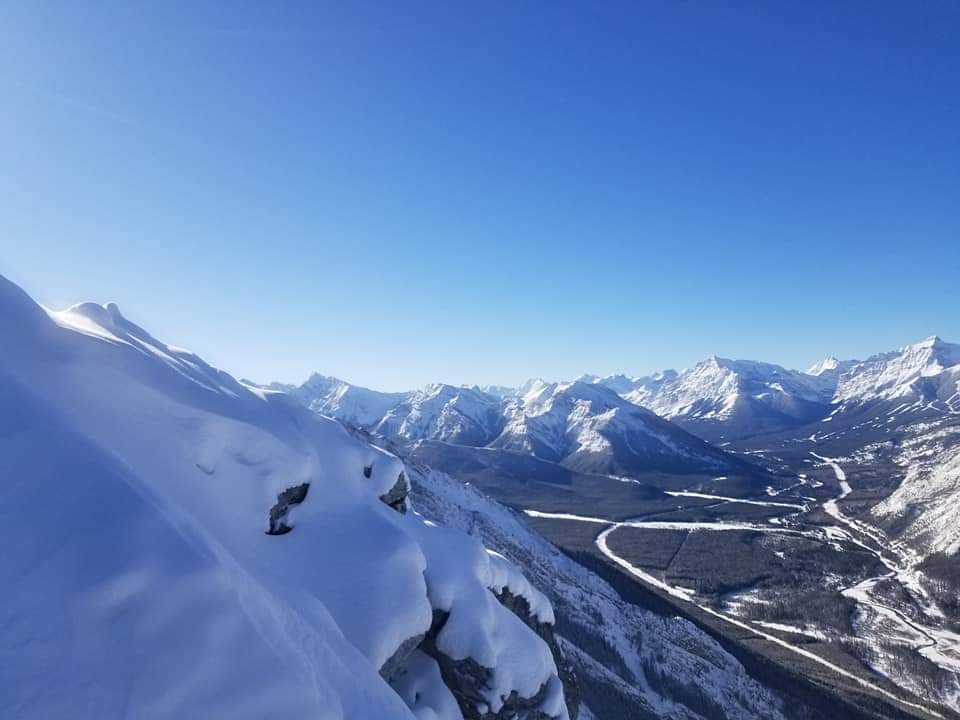
If cycling isn’t your thing, motor down the highway when it is open. Make it a day trip and exit the highway near Longview. From Longview cruise up Highway 22 and enjoy the small-town ambience of Black Diamond and Turner Valley, and then head east back to Calgary. The drive is about 300 kilometers total in a roundabout route that leads you north back to Calgary.
Cruise Cowboy Trail
If you don’t want to go into the mountains, but would rather view them from afar, drive along the Cowboy Trail. The Cowboy Trail, which is Highway 22 located west of Calgary, is 735 kilometers of paved blacktop that stretches from Cardston in the south to Mayerthorpe in the north. The southern drive offers amazing views of the foothills and the mountains and runs through little communities such as Turner Valley, Black Diamond, Longview, and Lundbreck.
Cardston
If you drive south to Cardston, make sure to check out the Reynolds Carriage Museum. 54 kilometers west of Cardston is the beautiful Waterton Lakes National Park which possesses much of Alberta’s natural wonders. The park offers numerous hiking trails and it is especially beautiful in late May and early June when all the wildflowers are in full bloom. The park commemorates the numerous plant species (over 1000) that are found in the park with The Wildflower Festival in June.
South on Highway 2
Another southern route to explore is Highway 2 south of Calgary which leads you through quaint little communities like Okotoks, Nanton, Claresholm and Fort McLeod. Nanton has several museums to peruse. The Bomber Command Museum of Canada is a must-see as well as the Canadian Grain Elevator Discovery Centre and the Museum of Miniatures. There is a fee for entrance to these museums.
A popular stop for tourists is the World Heritage Site Head-Smashed-In Buffalo Jump, just west of Highway 2. It is one of the world’s best-preserved buffalo jumps, and it has an interpretive centre. One can imagine the sound of thundering hooves as large herds of buffalo pound across the wind-swept prairies unsuspecting of their fate that awaited them. The view offers a spectacular vista of the prairies and the rolling foothills.
Highway 2 south ends at Fort MacLeod. There, drivers can go either east towards Lethbridge or west towards Pincher Creek and the Crowsnest Pass. The Crowsnest Pass cuts right through the mountains into British Columbia. You may want to stop in at the Frank Slide Interpretive Centre and view and learn about the mountain that tumbled down on the town of Frank in 1903. It is a solemn spectacle.
Prehistoric Sites
If you are looking to be transformed into another time when dinosaurs roamed the earth, then there are several areas in southern Alberta to view them. Writing on Stone Provincial Park near Milk River in the deep south of Alberta will take you there. Wind-swept hoodoos provide a landscape that is prehistoric. There is camping and hiking in the park as well as guided tours of pictographs and petroglyphs. Beware, there are rattlesnakes in the area.
More of the same prehistoric landscape can be viewed at Dinosaur Provincial Park near Brooks. Camping is available but if you choose to do so you will need to reserve a site. The most notable prehistoric looking landscape is in the Drumheller area, east of Calgary. Before you enter the town be sure to stop at Horsethief Canyon, which offers a stunning view of the valley below. It is worth stopping for a picture or two.
The town of Drumheller is all about dinosaurs, and in fact it has the tallest dinosaur in the world. The World’s Largest Dinosaur, a model of Tyrannosaurus Rex, has a viewing area in the dinosaur’s mouth. There is a price to enjoy that view. Many of Drumheller’s stores and parks feature dinosaur sculptures for public viewing. Just west of town is the world-famous Royal Tyrrell Museum. If you are planning to visit the museum, please check for times it is open and the cost of entrance. Be sure to stop by the Little Church which is on the way.
Instead of going west from Drumheller go east and stop at the Hoodoo Trail. A short hike through the mushroom-shaped hoodoos takes one back to another era a long time ago.
In the deep south east of Alberta, Cypress Hills looms above the bald prairie. It is like an oasis containing a diverse mix of forest, wetlands, grasslands, animals and birds. There is camping and a visitor’s centre, and lots of hiking trails. Some of the views will literally take your breath away.
South-East Alberta
If you make the trek to deep south-eastern Alberta, stop by the Medalta Museum in Medicine Hat where the company used to make clay pots and vases. Their kilns look like giant beehives growing out of the ground.
Red Rock Coulee, a natural area that some people regard as what Mars may look like, is approximately 50 kilometers south of Medicine Hat. Huge red boulders dot the landscape and it is a must-see experience. There aren’t any amenities in the coulee, but it is definitely worth drive if you are in the area.
Alberta has numerous towns and areas to explore, and boundless natural beauty, regardless of which way you head out on the road. Most towns have festivals, fairs and rodeos throughout the summer months and the information is just a click away on a computer or smart phone. It is ours to explore. Get out and enjoy it.
Crossword Puzzle: Canadianisms
How well do you know Canadian slang? This crossword puzzle will test your knowledge.
Alberta: the history and more
Alberta, the most westerly of Canada’s three Prairie Provinces, joined the Confederation of Canada and became a province on September 1, 1905; the same day that Saskatchewan joined the Confederation. Before then Alberta and Saskatchewan were considered part of the Northwest Territories.
Alberta was named after Princess Louise Caroline Alberta, the fourth daughter of Queen Victoria. At the time, Queen Victoria was the sovereign head of state for the British Empire.
Origins
Alberta was inhabited by First Nations’ indigenous peoples for 10,000 years before it was discovered by European explorers in the 1700’s. Europeans such as Peter Fidler, David Thomson and Alexander MacKenzie, were the first to establish European settlements and map the vast area. Alberta is the fourth largest province in area in Canada. The first European settlements in the province were Fort Chippewan and Fort Vermillion, established in 1788.
Alberta is also the fourth largest populous province in Canada with over 4.2 million people. While Calgary is the largest city in the province, Edmonton, the second largest city, is Alberta’s capital. The first premier of Alberta was Alexander C. Rutherford, who served from 1905-1910. Rachel Notley is the province’s current premier, elected in 2015.
Landscape
The province’s landscape is rich and diverse. There are Badlands near Drumheller in the east and Milk River in the south, and the prairie stretch north and west between them eventually giving way to the foothills that roll into the spire peaks of the Rocky Mountains.
Alberta is part of the Prairie Provinces, along with Saskatchewan and Manitoba. It is known for its big open spaces and big skies, providing beautiful sunsets. The ranches and farms reflect the open spaces as many of them are sprawling, huge spreads used for raising cattle and growing grains. The land is rich and fertile, if irrigated, where fields of wheat, canola, barley and oats thrive. Wheat is the largest agricultural export from the province, followed by canola, live cattle and Durum wheat. The main destination for these exports is the United States, Canada’s largest trading partner.
Industry
Oil
The main industry in Alberta is oil. Alberta’s oil is the third largest export commodity in the world, behind Venezuela and Saudi Arabia, and the province houses the third largest oil reserves in the world. Alberta is also the second largest exporter of natural gas in the world and is the world’s fourth largest producer of natural gas.
Much of Alberta’s crude oil is found in the Tar Sands in northern Alberta, although the first major crude oil discovery was found in Turner Valley, south of Calgary, in 1936.
Tourism
Tourism is another major industry in Alberta as visitors spent over $8 billion in the province in 2016. Over 35 million tourists visit the province annually and it is easy to understand why so many people visit the province, with its pristine lakes and mountains which provide cross-country and downhill skiing and fishing, as well as hiking and mountain climbing.
The Bow River is internationally renown for trout fishing. Other popular tourist destinations besides the Calgary Stampede and the other major cities include Banff, Jasper, Lake Louise and Waterton Park. If you are searching for less popular destinations check out Dry Island Buffalo Jump Provincial Park or Head-Smashed-In Buffalo Jump, a World Heritage Site. You may also want to visit Dinosaur Provincial Park near Brooks, or Drumheller and Milk River. It is like taking a trip back through time with their diverse landscapes that contain mushroom-shaped hoodoos, eroded by the wind and the weather over thousands of years. The Royal Tyrrell Museum near Drumheller has the largest collection of dinosaur bones and fossils in the world, and Drumheller has the tallest standing dinosaur in the world. It is worth a trip just to see it.
People
Some notable Albertans include:
- Tommy Chong (actor);
- Tricia Heifer (model/actress);
- Joni Mitchell (singers/songwriter);
- K.D. Lang (singers/songwriter); and
- Feist (singers/songwriter), to name a few.
A Brief History of Canada
Canada is relatively a new country compared to the long-established nations of the world in Africa, Asia and Europe. Although, Canadian history does have a rich pageantry in the short time since it has become an independent nation.
Origin
Canada’s name originates from the Huron/Iroquois name ‘Kanata’, which means ‘settlement’, or ‘village’. The first inhabitants on the land were indigenous people. The Vikings, Norsemen, also established a settlement in Newfoundland around 1001 AD, and explorer Leif Erikson and his crew were the first Europeans to touch the earth in North America, 500 years before Christopher Columbus arrived.
Exploration
The country was first explored mainly by French explorers such as Jacques Cartier, who in 1534 mapped the Gulf of St. Lawrence and claimed the land as the Colony of New France. Then Samuel de Champlain established the city of Quebec in 1608 and was named the ‘Father of New France’. Rich in natural resources and a booming fur trade, other nations, such as Great Britain, also wanted to claim Canada as its own.
Govern & Ruling
Prior to the birth of the nation, part of the land was under French rule. During the next 200 years, conflict ensued and in 1763 it was ceded to England after the French were defeated on the Plains of Abraham just outside of Quebec City, in the Seven Years War. Canada became a colony of England until 1867, when the new independent nation, the Dominion of Canada was established. Today, Canada is still a member of the British Commonwealth.
Under the guidance of Canada’s first Prime Minister, Sir John A. Macdonald, the Province of Canada (which consisted of Lower and Upper Canada, now the provinces of Ontario and Quebec), was joined by two other British colonies, New Brunswick and Nova Scotia, to form a confederation of provinces and a self-governing entity. On July 1, 1867, the Dominion of Canada was born.
There are now 10 provinces and three territories that comprise Canada, and each province and territory has its own capital. In 1870 the province of Manitoba and the Northwest Territories joined confederation. Using the promise of completing a railroad across Canada by the Canadian Government, British Columbia joined the Confederation in 1871. Prince Edward Island, Canada’s smallest province, was added to the nation in 1873. 25 years later, in 1898, the Yukon Territories became part of Canada, partially due to the Yukon Gold Rush that needed policing at the time. Alberta and Saskatchewan joined in 1905, and the last province to become part of Canada was Newfoundland and Labrador, in 1949. Nunavut, which was part of the Northwest Territories, entered Confederation in 1999.
There have been 22 Canadian Prime Ministers, from the first one, Sir John A. Macdonald to our current Prime Minister Justin Trudeau. William Lyon Mackenzie King has been the longest serving Prime Minister as he was the head of government for more than 21 years. John A. MacDonald, Wilfred Laurier and Pierre Trudeau all served as Prime Minister for more than 15 years each.
War and Conflict
Since becoming a nation Canada has been involved in 14 different wars and conflicts throughout the world, starting with the Fenian Raids in 1866-1871. As a colony of Great Britain, Canadians fought in the War of 1812 with the British against the United States and it was during the war, due to the American threat, that the city of Ottawa was made the capital of Canada.
Canada had a defining moment on the international stage in World War 1 in 1917, when four divisions in the Canadian Corps attacked Vimy Ridge during the Battle of Arras in France and overtook the Germans in four days. It was a huge victory but had a terrible cost as over 10,000 Canadians either lost their lives or were wounded in the battle. It was the first time in history that Canada attacked another nation as one military unit.
Canada also served and played a big role in the Second World War, declaring war on Germany a week after the British declared war on the axis nations. The nation participated in the Korean War and present day it is battling ISIS, along with numerous other countries.
Despite being involved in numerous wars and conflicts, Canada is viewed as a peacekeeping nation, partially due to the work of Canadian diplomat and former Prime Minister Lester B. Pearson. In 1957 Pearson won the Nobel Peace Prize for his involvement in solving the Suez Crisis, convincing Britain and France to depart from Egypt. He created the United Nations Emergency Force, which is the modern concept used at present for peacekeeping.
Want to learn more about Canada?
14 Canadian Facts You Should know
There is so much to learn about a new country when you first arrive. Here are 14 facts about Canada that you should know as you take off on your Canadian journey.
Canadian Facts
- Canada is the second largest land mass country in the world after Russia.
- Canada borders three oceans; Atlantic, Arctic and Pacific.
- Canada has the longest shared border in the world with the United States, 8893 kms.
- Boasting the longest coastline in the world, Canada has 243,977 kms of shoreline.
- There are approximately 36 million people living in Canada.
- O’ Canada is the national anthem.
- There are two official languages in Canada, English and French.
- Mount Logan is Canada’s highest mountain and resides in the Yukon.
- Canada’s longest river is the Mackenzie River.
- The official animal of Canada is the North American Beaver.
- Canada’s official motto is: ‘From Sea to Sea’.
- Canada’s official sports are hockey and lacrosse.
- Nunavut is translated to ‘our land’.
- Montreal is the second largest French speaking city in the world after Paris.

